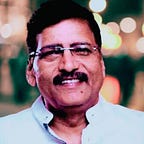What is High Frequency Trading?
High Frequency Trading is a sub-branch of algorithmic trading. In this article I explore the essence of HFT and algorithmic trading. This article also gives a very high level understanding of the “Flash Boys” and IEX exchange.
Humans are smart and machines are dumb. Artificial intelligence is highly overrated. Human intelligence wrapped around a computer program is the reality of artificial intelligence. The holy grail of artificial intelligence is to incorporate human emotions. It might prove to be impossible to be able to give emotions to algorithms. Algorithms are simple rules designed by humans to perform a task over and over again. The lack of emotion and the ability to repeatedly perform the same task is the ultimate victory and simultaneously the greatest source of failure of algorithms.
Stock markets are often referred as an index of fear and greed in the society. Algorithms have begun to decode the advantages of relentless pursuit of objective of decision making without any emotion in the stock market. The march of computerization in the stock market began with replacing the open outcry with electronic exchanges. This not only brought unprecedented transparency but also enabled wider information access. The next wave in Computerization came through Internet in Trading. Computers provided real time information to everybody democratically around the globe without any discrimination, and also gave direct access to traders to place their orders. . Computers replaced the middle men in the system to provide real and direct access to the end consumer.
Computers are now moving from mere enablers and facilitators in stock market to becoming decision makers. After sidelining the necessity of brokers and traders, Computers are now making traditional advisers useless. Algorithms perform many mundane tasks of an adviser and assist to take decisions. Algorithms today read financial reports, scan the internet for any relevant information, analyze social media for any indication and take unbiased decisions. This branch of trading is called Algorithmic Trading. As algorithms are powered by human intelligence, they evolve regularly. Just like on the floor when many brokers wrestled with each other to arrive at the appropriate price, today many algorithms compete with each other to do just the same.
High Frequency Trading (HFT) is a sub branch of Algorithmic Trading, where buy and sell decisions are taken very rapidly. High Frequency Trading plays a vital role in effectively matching a buyer and a seller. In High Frequency Trading only a small quantity is traded every few seconds and the profit in high frequency trading is usually very small as the positions are squared off rapidly and the positions are kept only for a few seconds. Algorithms maximize the number of times the trading happens. For example, in a High Frequency Algorithm, a single stock can trade as high as 10% of the volume and can execute thousands of trades. High frequency trading runs on statistical models where the chances of win are usually more than the chances of loss. High Frequency Trading is essentially less risky due to small positions and relatively very short duration of open position.
In March 2014 a book named “Flash Boys” by the author Michael Lewis was released which talks about HFT firms impacting the market negatively. Brad Katsuyama, a Canadian financial services executive actively promotes this book’s ideology. This book highlights only one view while deliberately ignoring the other.
Like 2 sides of a coin, there are two sides to the HFT debate too. On one side is the HFT “devil” showcased by Michael Lewis and Brad Katsuyama and on the other side is the HFT “angel” driving the market towards prosperity and liquidity. Michael Lewis himself acknowledges that HFT provides more liquidity to the market, reduces exchange fees and results in tighter and broader markets.
In the book, Michel just took one example to malign an entire industry.
While Brad bad mouths the HFT industry; in reality he is trying to build an exchange for them.
Brad Katsuyama co-founded IEX in 2014. Since the beginning IEX has been facing problems with traditional exchanges. IEX was sued by NASDAQ for allegedly infringing its technology patents. To promote trading, IEX offered volume rebates to HFT firms and was widely criticized as it was promoting volume instead of liquidity. After 5 years of launching an exchange and no listing, IEX has begun to sound awfully like any other exchange.
Next, I will write about the Indian HFT space — who are various players, size of the market etc.
All articles are here. The author advises market participants in legal matters related to securities markets and has advised some noticees in this matter also.
